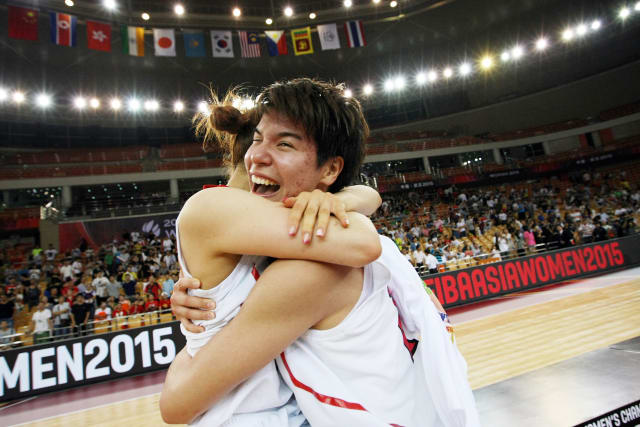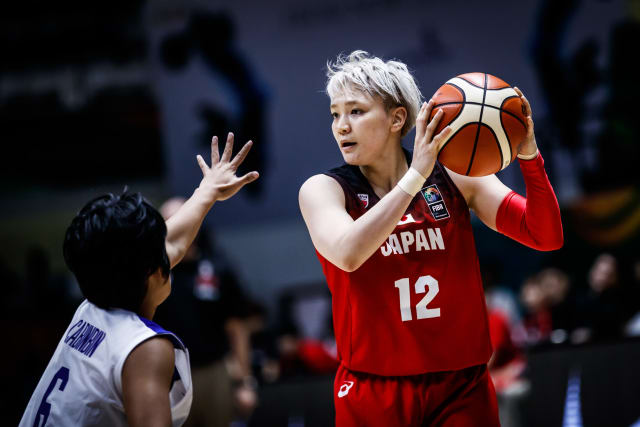5 burning questions waiting to be answered at FIBA Women's Asia Cup 2019
BENGALURU (India) - As the FIBA Women’s Asia Cup approaches, here are some unresolved topics that fans might like to see figure themselves out in Bengaluru from September 24-29.
BENGALURU (India) - A basketball is round and there will always be uncertainty heading into a game or a competition. As the FIBA Women’s Asia Cup approaches, here are some unresolved topics that fans might like to see figure themselves out in Bengaluru.
Can Japan complete a four-peat?
A three-peat is a cool accomplishment, especially in the manner that Japan did it successfully in 2013, 2015, and 2017. Now that they have three, the question is whether they can go for four straight Women’s Asia Cup titles.
It’s a fair question and one that is not too farfetched either. There have already been two other nations in Korea (1978-1984) and China (1990-1995) that have done it in the past, which at least sets the bar of possibility for Japan.

(Ramu Tokashiki, FIBA Women's Asia Cup 2015)
The squad Japan has assembled is capable of carrying out the task as well, highlighted by Ramu Tokashiki who has already won two Asia Cup titles coupled with her two Asia Cup MVPs. While there might be some concerns around the void left behind by Asami Yoshida’s retirement, Japan should have an experienced enough roster to figure things out to play at their best.
Japan has the capability to complete the four-peat and it they do it will mean Yuki Miyazawa will be the only player to have been on all 4 rosters during this run. If that does happen, the burning follow-up question would then be: Can they be the first team ever to go for 5 straight?
How will Japan cope without Yoshida for the first time after 6 Asia Cups?
It will be tough imagining Japan at a Women’s Asia Cup without their leader Asami Yoshida. After all, she has been featured on the roster ever since all the way back in 2007.

(Asami Yoshida, FIBA Women's Asia Cup 2017)
Nonetheless, it’s pretty clear from watching the team play in 2017 that they are prepared and ready for playing without Yoshida. As a matter of fact, the veteran didn’t even play in the Semi-finals and the Finals against China and Australia.
Japan might never be able to identically replace Yoshida and what she brings to the team, but the contributions of Miyazawa, Maki Takada, and Moeko Nagoka are going to be just as valuable to the team.
And that Ramu Tokashiki should be pretty good too, right?
Can the Opals exact revenge and claim the Women’s Asia Cup title this year?
The answer here is an obvious “Yes”.
Australia are the 3rd ranked Women’s team in the world, according to FIBA World Rankings presented by NIKE. They won the silver medal at the Women’s Basketball World Cup last year and are bringing along 6 players from that successful squad. Led by Rebecca Allen, there is more than enough talent among the players on this team to win it all in Bengaluru.
But as they found out in 2017, it won’t come easily with the likes of China and Japan taking along some of the best they have.
Still… Australia were only two points away from winning the FIBA Women’s Asia Cup title on their very first try and were rampaging through the entire competition leading up to the championship game. They certainly have the potential to win it all this year.
Can China restart another dominant run like back in the 90s and the early 2000s?
There is no denying the fact that China dominated the Women’s Asia Cup throne for two decades and a half from 1986 to 2011. The résumé speaks loudly for itself.
10 titles.
Only 2 times missing out at a Top 2 finish.
However, it’s been 8 years since they were crowned champions of the Women’s Asia Cup and China badly wants to get back on that throne. It seems like good timing that seasoned and skilled vets like Gao Song and Shao Ting are able to join forces with the rising stars such as Li Yuan, Han Xu, and Li Yueru.

(Han Xu, FIBA Women's Basketball World Cup 2018)
With a talented and young core ready to rise alongside proven seniors on this 2019 squad, it could be the start of another lengthy run at the top for China. Still, their focus will be dead set on winning the upcoming title ahead of them first.
How big of an impact will the current and former WNBA players have on their teams?
It should go without saying that making it to the WNBA is no easy feat. That’s why it’ll be interesting to see how much they will contribute to their team’s relative success throughout the Women’s Asia Cup.
Rebecca Allen is a recognizable name from the New York Liberty who has been enjoying a breakout season. Though she was teammates with rookie Han Xu in New York, they will now be going up against each other in Bengaluru.
Leilani Mitchell of Australia also played for the Liberty, actually winning the Most Improved Player award with New York back in 2010, but moved on to play for the Phoenix Mercury but before she could team up with Allen. It’s worked out for Mitchell nonetheless, as she just won another Most Improved Player award once again this year with career-high numbers.
Tokashiki previously had 3 productive seasons with the Seattle Storm. Shao Ting had a brief stint with the Minnesota Lynx earlier this season, where she played with Australia’s Stephanie Talbot. The list continues with others also including Li Yueru and Australia’s Ezi Magbegor who were both drafted this year but have yet to make the jump.
Long story short, there will be a truckload of WNBA talent at the Women’s Asia Cup and they will be playing a huge role in the outcome of the competition, one way or the other.
FIBA